What do Bass Eat? Supreme Guide on Choosing the Right Bait
Share this with every angler you know!
Bass are some of the best sport fish in the world. They’re not difficult to catch and suitable for even youthful anglers, but they are complex enough when targeting personal bests that the skill limit is practically non-existent. Not to mention, they’re excessively violent once hooked, and few things compare to a trophy-sized bass breaching the surface with its gills flared and massive mouth agape.
However, you still have to know what to use to get their attention, or you’ll never catch one.
Luckily, bass aren’t too finicky. Several live baits work well, and every angler’s tackle box is sure to have several lures that will draw their attention with ease.
Let’s take a look at what bass like to eat and how you can mimic their prey to catch your next personal best.
Newsletter Signup
What do Bass Fish Eat Naturally?
Bass are predators. If catfish are the slow, brooding tigers of the lakes, then bass are the cheetahs looking for the opportune moment to burst into a chase relentlessly. As such, they’ll eat pretty much anything smaller than them in their natural environment.
This has pros and cons for fishermen. First, smaller bass will only eat smaller living creatures in their environment. This means that if you're going for catches in fast succession, you'll need to stick to smaller baits and lures that'll nab those mid-sized bass that are practically everywhere. However, larger bass, the ones dreams are made of, will eat larger baitfish whole, gulp up the largest crawfish, and overall target just about anything their massive mouths can get around.
Here are the most common food items for largemouth bass.
Small crustaceans such as lake-bottom snails and smaller crawfish
Insects both above the surface and below it such as worms, dragonflies, grasshoppers, crickets, and unfortunate caterpillars.
Larger bass will target the large, fully-grown crawfish at a lake’s bottom.
Small baitfish such as minnows, shad, and similar one-bite fish.
Bluegill small and large depending on size.
Smaller bass.
Larger bass will target frogs both in the water and on its surface.
As we go through our guide to choosing the right baits and lures, you’ll notice that the vast majority of artificial lures are designed to mimic one or more of these list items both visually and in terms of their movements or “action”.
Choosing the Right Live Bait for Bass
When it comes to sport fishing, live bait isn’t used too commonly. A big part of sport fishing for bass is built upon a fisherman using his skills to attract the bass rather than hoping it comes along if the right bait is chucked in the water.
However, this is a legitimate fishing method, and it will bring in bass like it’s nobody’s business.
Keep in mind that bass are reactionary predators. They tend to strike the most whenever something nearby is attracting them and potentially irritating them. That’s why so many lifelong anglers swear by Rattletraps and spinners. If you think you’re going to chop a bluegill up and chuck it out there, you’re going to have a rough time. Instead, it’s best to use hooking techniques and rigs that keep the fish alive as long as possible. This usually requires you to hook them through the back just beneath the spine, but not far enough that you puncture any internal organs. The fish will stay alive and continue to swim around; attracting bass with its wounded movements and blood loss.
You can find the proper hooks for this method from various brands such as Eagle Claw, Gamakatsu, and Mustad at affordable prices.
Finally, keep in mind that catfish eat many of the same baits that we'll be listing here, and they're far more likely to pick up on live bait. So, expect to catch not only bass but also some hefty catfish. This can happen with lures, but it's far rarer. If you want a pure bass-fishing experience, stick to lures.
Bluegill
Bluegill are great baitfish if you're looking to catch personal bests. They're larger, heartier fish in comparison to a trophy-sized bass's mouth, and they're far more appetizing to such large bass compared to minnows and other small baitfish.
However, make sure you’re not chucking out the plate-sized bluegill all ultra-light anglers dream of. They’re usually a tad too much, and they’re better off released or used for other purposes. Small or mid-sized blue-gill are perfect, though.
Minnows and Shad
Minnows and shad are better if you’re looking to casually target bass. They’re small, cheap, and usually capable of being kept alive throughout an entire fishing trip. If they do die, you have some stellar catfish bait you can vacuum seal and freeze for later.
Also, keep in mind that, if you’re at a fishing hole that allows it, you can get both of these baitfish for free with a bait net and a few minutes of wading. This is an extra step in your fishing trip, but hey, it’s free bait.
These aren’t likely to trigger the larger bass due to their small size, but mid-sized bass and smaller bass are likely to pick up on them very quickly.
Frogs
Frogs are a bit more difficult to use as live bait, but you can do it. These are hooked differently than baitfish, and instead of piercing beneath the spine, you'll want to run your hook through both of the frog's "lips" with the pointed hook point up and away from the frog's head. Think of it as a lip piercing.
Frogs have an incredible action and can attract bass of all sizes, but they’re harder to get a hold of in large enough quantities for a full day of fishing. Still, they’re not bad to combine with other live bait.
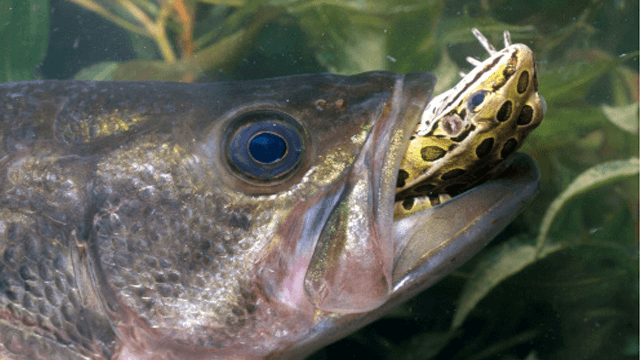
Insects
Grasshoppers will be your main choice if you want a lot of action and plenty of food for larger bass. If hooked properly, they’ll skitter around on the surface and function like a topwater bait.
Worms are also great general-purpose live baits, but keep in mind that you'll catch everything from bluegill to catfish with them. So, you're highly unlikely to just get the bass you're looking for.
Finally, crickets, larvae, and other small insects are great for small bass, and they’ll net you plenty of bluegill for more substantial live bait.
All of these can be purchased alive at a proper bait store at very affordable prices, or you can take the old-fashioned route and do a bit of insect hunting the day before your fishing trip.
Imitating Food with Lures
Like we said earlier, live baits tend to pick up a fairly large variety of fish, and you’re never guaranteed to just catch what you’re looking for.
Well, that’s where lures come in. While lures will sometimes attract other fish, it’s a lot easier to control whether you’re attracting bass or random other fish since bass are reactionary.
If you throw out a spinner bait 20 times and catch 15 fish, we can almost guarantee that the vast majority of those fish will be bass.
However, while bass are known to react to everything from homemade spoon lures to sometimes bare hooks when they’re really hungry, you need to mimic the foods they naturally eat if you want consistent results and high-quality fish.
Let’s go over some of the best ways to mimic these key parts of a bass’s diet.
Frogs
You can mimic frogs in two ways, and neither are overly difficult.
First, the most common way is to use a topwater frog. These rubber frogs float along the surface, and they look extremely lifelike in regards to their bodies and heads. The skirts attached to the back are designed to mimic the legs of a frog. As they fluctuate with movement, they retract and extend just like a swimming frog.
These trigger intense bites, but you have to wait until the bass takes the frog under entirely before you set the hook. The slightly different timing of your hook-set is what throws a lot of anglers off.
Then, you can use soft-plastic frogs. These resemble the general shape of an outstretched frog, and they’re used under the surface to replicate a frog diving and swimming for underwater food.
You can use these with drop-shot rigs, worm rigs, and practically anything else you’d use for a soft-plastic worm lure, and similarly, you want to use movements that make the frog gently bounce up and then glide back downwards.
Worms
These are staples of the bass fishing world, and since they come in all sizes with a variety of features, you can use them for any size of bass.
The trick here is to use a drop shot or worm rig and bounce the worm around. This falling motion resembles when a worm falls into the water and slowly glides down, and it triggers bites like crazy.
Of course, purchasing soft-plastics with scents, or adding your own scented lubricant, is recommended for a bit of an extra oomph.
Always try to keep several bags of soft-plastic worms in a variety of sizes and colors in your tackle box.
Crankbaits
Crankbaits resemble smaller baitfish, but they’re outfitted with rattles and paddles that make noise and create distinct movements. These features drive bass nuts while replicating the movements of a frantic baitfish; triggering quick reaction bites whether the fish is hungry or not.
Swimbaits
These are probably the easiest to use, and they come in a few different formats.
There are soft plastic swimbaits that you reel and jerk in various patterns, and they use a paddle tail to generate intense movement in the water. These are cheap, and you can find them in a large variety of sizes and colors. Like worms, you should have as many variations as possible in your tacklebox to match what the bass are looking for at any given time.
Then, you have hard swimbaits. These are segmented plastic fish that usually have designs printed on them to look just like the real deal.
These tend to be expensive, especially when you go for the higher quality ones, but they’re pretty easy to use on a heavier rod. As you reel and occasionally jerk the lure, the segments of its body create a wave just like a fish swimming through the water.
To make sure you’re using the lure in an appropriate manner, drop it in a clear, shallow part of the lake. Take some time testing different speeds and seeing how the lure moves in the water. When you throw it out for real, you’ll want to mimic real fish movements as closely as possible.
Of course, hard plastic swimbaits are also some of the most heartbreaking lures to lose. So, try to keep them out of dense underwater vegetation unless you have some sort of snag-free hooks installed.
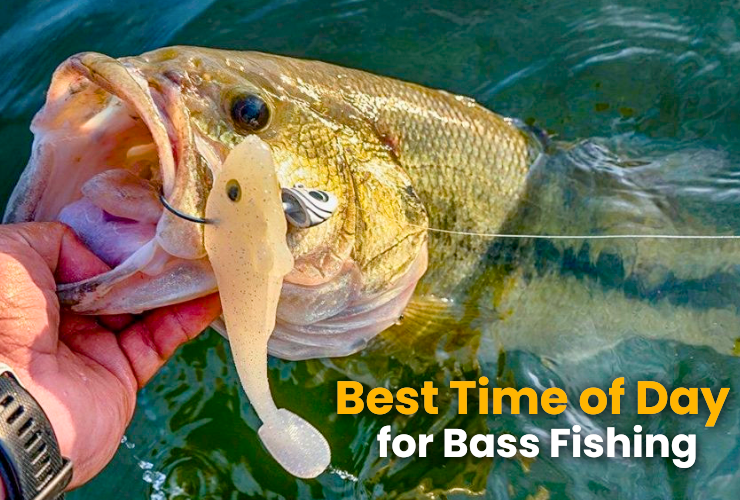
Soft-Plastic Crawfish
You might have noticed we didn’t mention live crawfish in the live bait section. Well, that’s because those are a pain to hook, and they’re better off in a Cajun boil.
However, soft-plastic crawfish are great for fishing the bottoms of murky lakes. Attach them at the tail using a worm hook and bullet weight –they move backward under the water-, give the lure plenty of time to settle at the bottom after your cast, and gently bounce it a couple of inches at a time across the mud.
This is the perfect way to simulate the crawfish portion of a bass’s diet without all the wasteful pain-in-the-rear nonsense required for live crawfish.
What Bait Should I Use for Bass Fishing?
At this point, you’ve learned all about the most common live baits and the lures that mimic their food the most effectively. So, which one should you use?
Well, bass fishing is a sport. You’re supposed to test your skills, constantly one-up your personal best record, and of course, have fun on the water learning new techniques.
Because of that, and the catch-and-release nature of the sport, we recommend lures. Lures force you to learn how to mimic a bass’s diet, and there isn’t much room for error when doing so. Not only that, but it’s a lot more engaging. You’re constantly pitching lures and trying different cadences rather than chucking bait into a lake and waiting around sunbathing.
For more tips on bass fishing, check out the rest of Bass Forecast’s tips, tutorials, and resources.
Know – Adapt – Catch® more with Bass Forecast.
Learn More How Bass Forecast Works

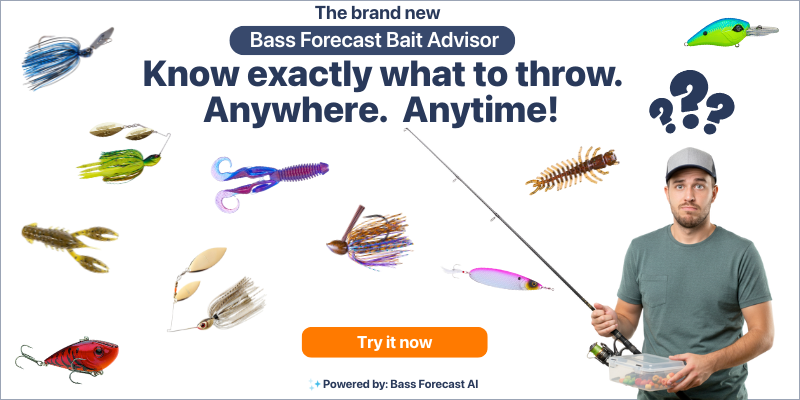

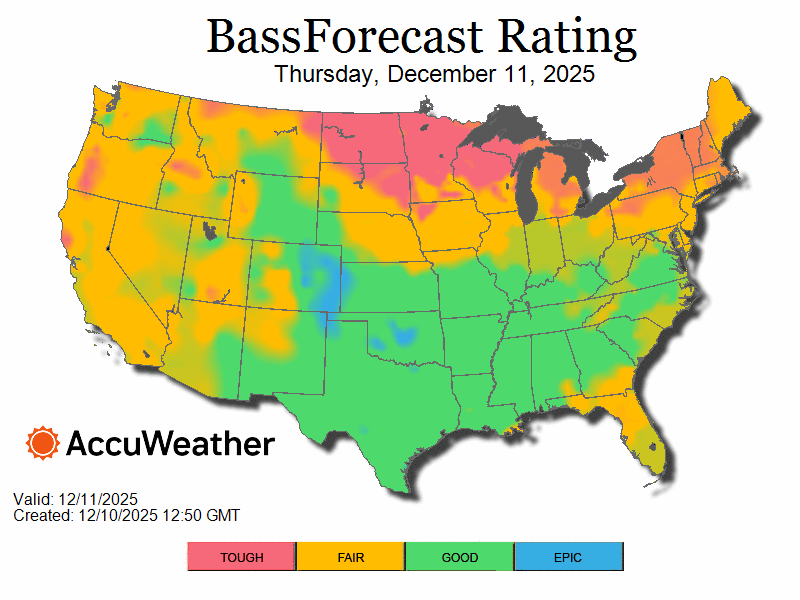

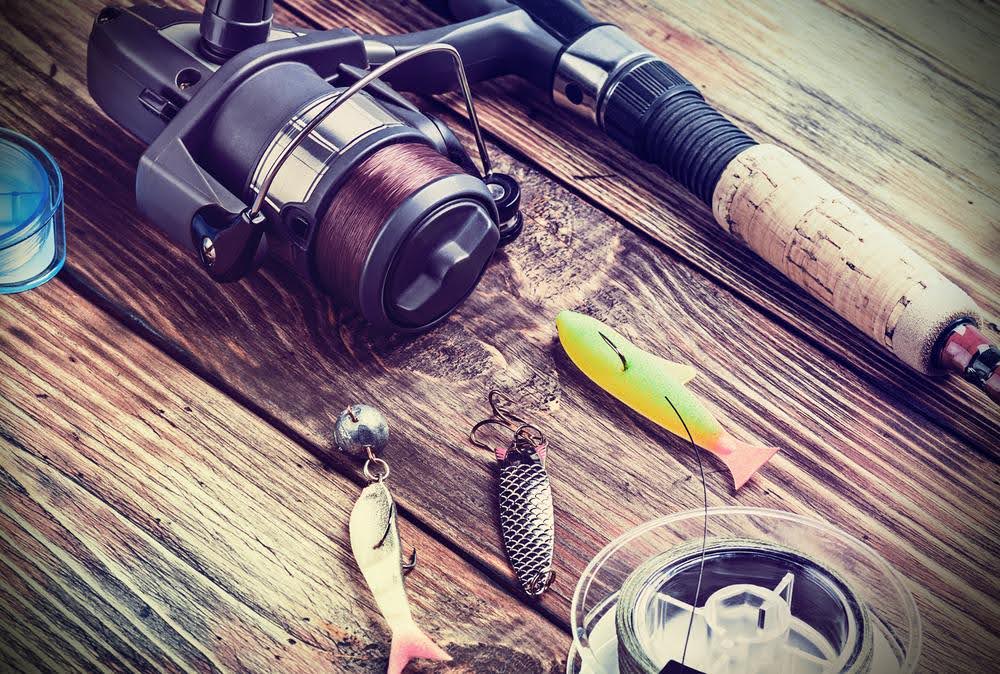
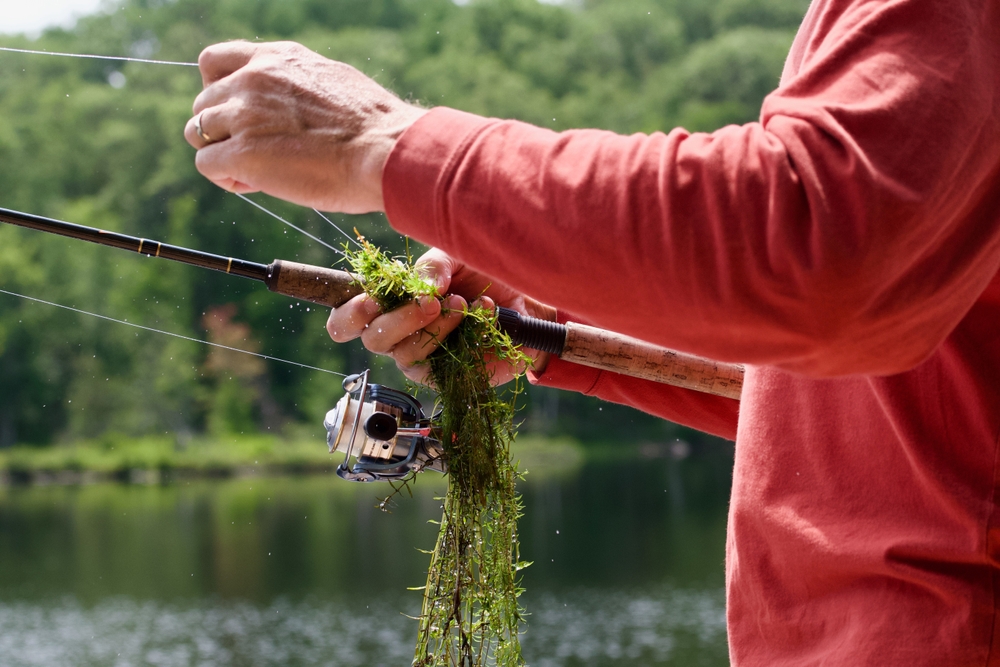
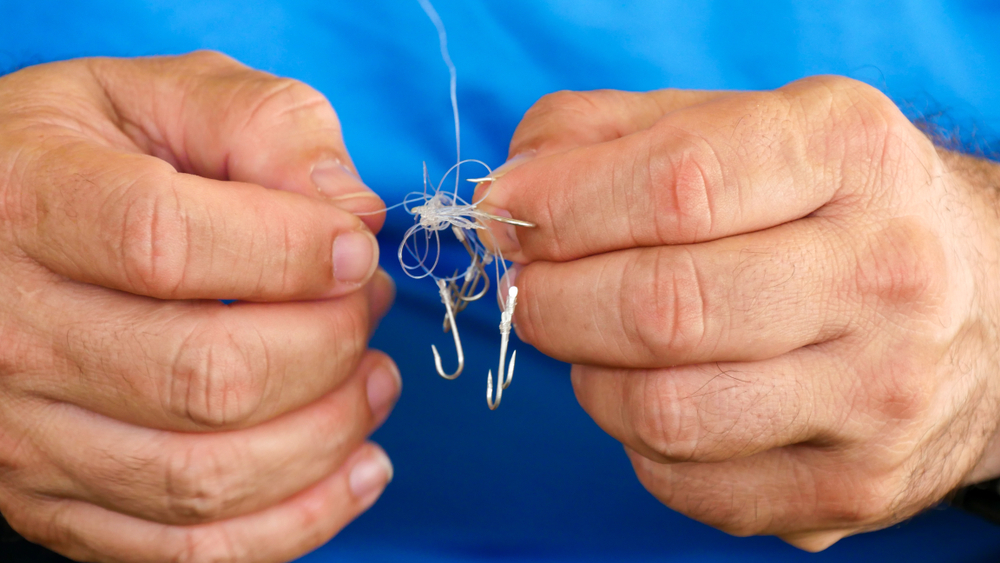
-1739275914.jpg)
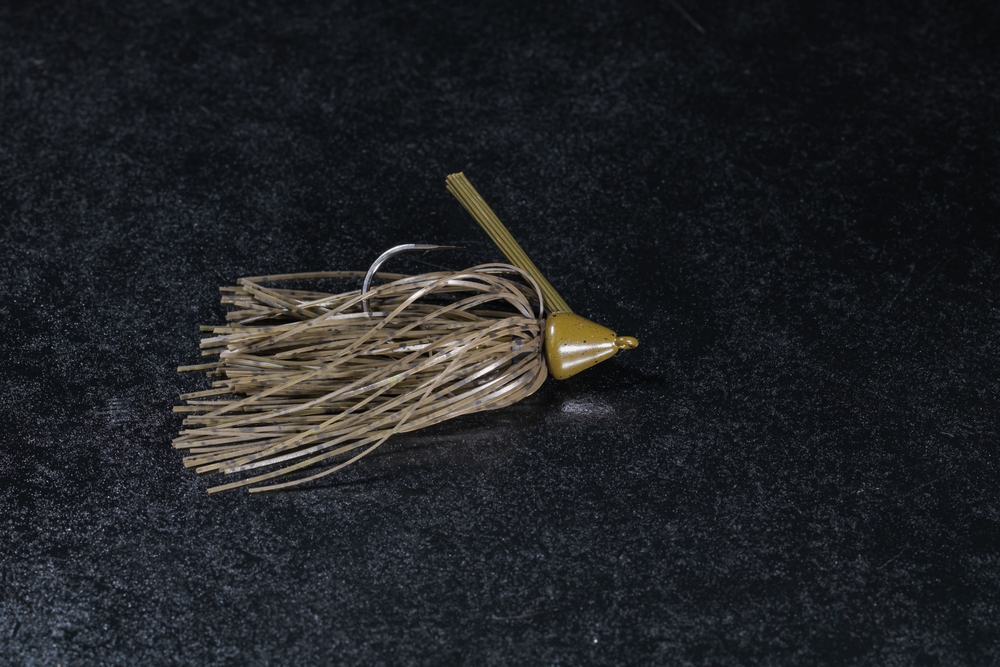
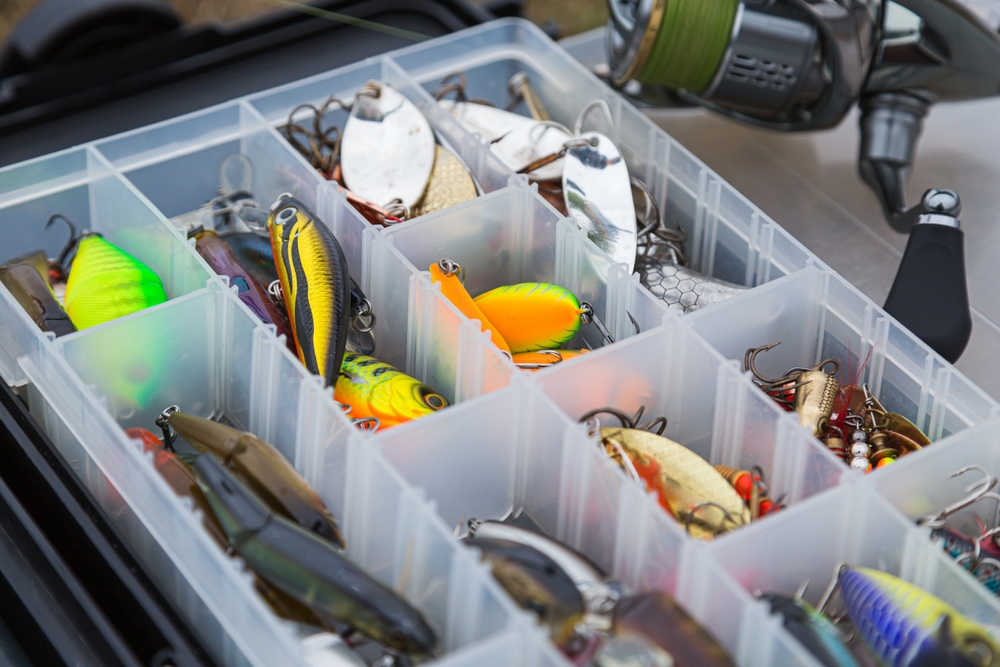

.png)
.png)